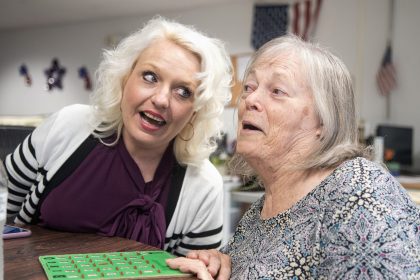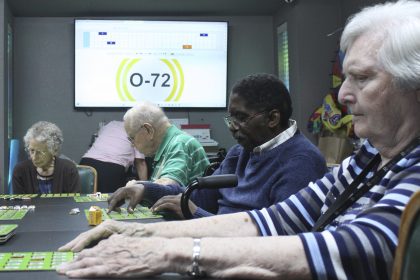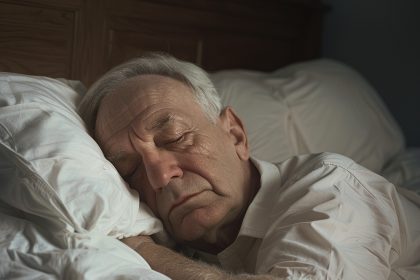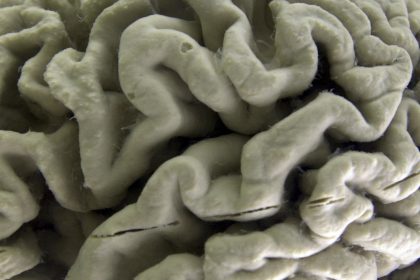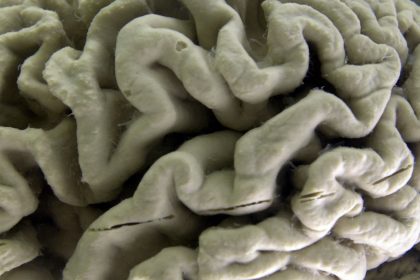Black Americans Underrepresented in Residential Care Communities, AP/CNHI News Analysis Finds

Norma Upshaw was living alone south of Nashville when her doctor said she needed to start in-home dialysis.
Her closest family lived 40 miles away, and they’d already scrambled once when the independent senior living facility the 82-year-old had called home — a community of largely Black residents — had closed with 30 days’ notice. Here they were searching, yet again, for an assisted living facility or maybe an affordable apartment that was closer.
They couldn’t find either, so Upshaw’s daughter built a small apartment onto her home.
“Most of her doctors, her church, everything was within Nashville,” said Danielle Cotton, Upshaw’s granddaughter, “… this was the best option for us.”
Nearly half of Americans over 65 will pay for some version of long-term health care, the landscape of which is quickly transitioning away from nursing homes and toward community living situations.
Black Americans are less likely to use residential care communities, such as assisted-living facilities, and more likely to live in nursing homes, CNHI News and The Associated Press found as part of an examination into America’s long-term care options. The opposite is true for White people.
Experts say the reasons why are complicated and varied: personal and cultural preferences, physical location of residential care communities and insurance coverage. But the result is older Black Americans may be left out of living situations that can create community, prevent isolation and provide help with daily tasks.
“The bottom line is White, richer people have a solution now — which is these incredible assisted-living communities — and minorities and low-income people don’t,” said Jonathan Gruber, an economist at Massachusetts Institute of Technology. “That is the fundamental challenge facing our country as our demographics are shifting.”
The AP and CNHI News analyzed data from the most recent National Post-acute and Long-term Care Study in 2020, and found Black people are underrepresented in residential care communities nationally by nearly 50%.
Black Americans account for about 9% of people over 65 in the U.S. But they are underrepresented in residential care communities at 4.9% of the population, and overrepresented in nursing homes — about 16% of residents.
The situation is flipped for White Americans, who make up 75% of Americans over 65 but are 88% of the people in residential care communities. The AP-CNHI News analysis also found other ethnic and racial groups are underrepresented in assisted living facilities, but only Black Americans were also overrepresented in nursing homes.
Lacking a universal definition for assisted living, the federal study created the “residential community care” category to represent settings that serve people who cannot live independently, but also do not require the more comprehensive care provided in nursing homes.
Financial barriers affect low-income people of all races, experts said, but they’re heightened for older Black Americans. Black workers make $878 weekly compared to $1,085 earned by White workers, according to data from the U.S. Bureau of Labor Statistics, which shows this national gap has existed for decades.
That affects both the potential to spend on long-term care — and, earlier in life, homeownership rates. Many residents sell their homes to fund senior care, and more than seven in 10 homeowners in the U.S. are White, according to 2020 U.S. Census Bureau data.
One month in an assisted living facility runs $4,500 a month or $54,000 a year, according to a national median cost from the National Center for Assisted Living, which represents assisted living providers.
Most people pay privately, often through personal funds or long-term care insurance; nursing homes can be covered by Medicaid. That puts assisted living out of reach for many Black Americans, explained Cotton, who also founded and runs a Nashville nonprofit that helps financially strapped seniors find housing.
She said many can barely pay for government-subsidized housing, let alone expensive living communities: “It leaves them in a gap. Those are the seniors that are really not even considered or thought about.”
The process of paying for long-term care is “as opaque as it can be,” said Linda Couch, senior vice president of policy and advocacy at LeadingAge, which represents nonprofit long-term care providers and researches long-term care.
And researchers’ major question as more assisted facilities open up across the U.S. — are they located near Black communities? — is hard to answer, too.
“The federal government doesn’t even have a list of assisted living (facilities),” said Lindsey Smith, a health systems management and policy researcher in the Oregon Health and Science University-Portland State University School of Public Health. “There is not, like, a registration.”
While affordability is a clear determining factor of who can and can’t access assisted living, researchers say it doesn’t completely explain why more Black people are not moving in.
Steven Nash’s father could afford the most expensive assisted living facilities, but the former judge wanted to stay home. So while Nash ran one of the nation’s last remaining Black-owned nursing homes in the Washington, D.C., area, he also helped care for his father until he died at the age of 87.
“Even though it was very difficult for the family, we still kept that promise,” he said. “We try as hard as we can to honor the wishes of our elders.”
But for others, assisted living is an option for independence even as their daily needs grow.
Older Black Americans are twice as likely to have Alzheimer’s or other dementias compared to older White people, according to the Alzheimer’s Association.
In Texarkana, Texas, former lawyer Jay Cossey moved into an assisted living facility after multiple strokes more than seven years ago that caused him to lose most of his short-term memory. He’s one of a handful of Black residents at a facility that is blocks away from his old apartment.
His church community urged the 70-year-old to move in, though his family in Alabama has pushed for him to come live with them.
“My brother came and said he wanted to take me home,” Cossey recalled. “I told him I am home. I’m home because I feel good here.”
___
Gerber reported from Kokomo, Indiana; Shastri reported from Milwaukee; and Forster reported from New York.
The share of the U.S. population older than 65 keeps rising — and will for decades to come. Since nearly half of Americans over 65 will pay for some version of long-term health care, CNHI News and The Associated Press examined the state of long-term care in the series the High Cost of Long-Term Care, looking at adult day cares to high-end assisted living facilities, to understand the challenges in affordability, staffing and equity that exist today and lie ahead.
___
The Associated Press Health and Science Department receives support from the Howard Hughes Medical Institute’s Science and Educational Media Group and the Robert Wood Johnson Foundation.



















